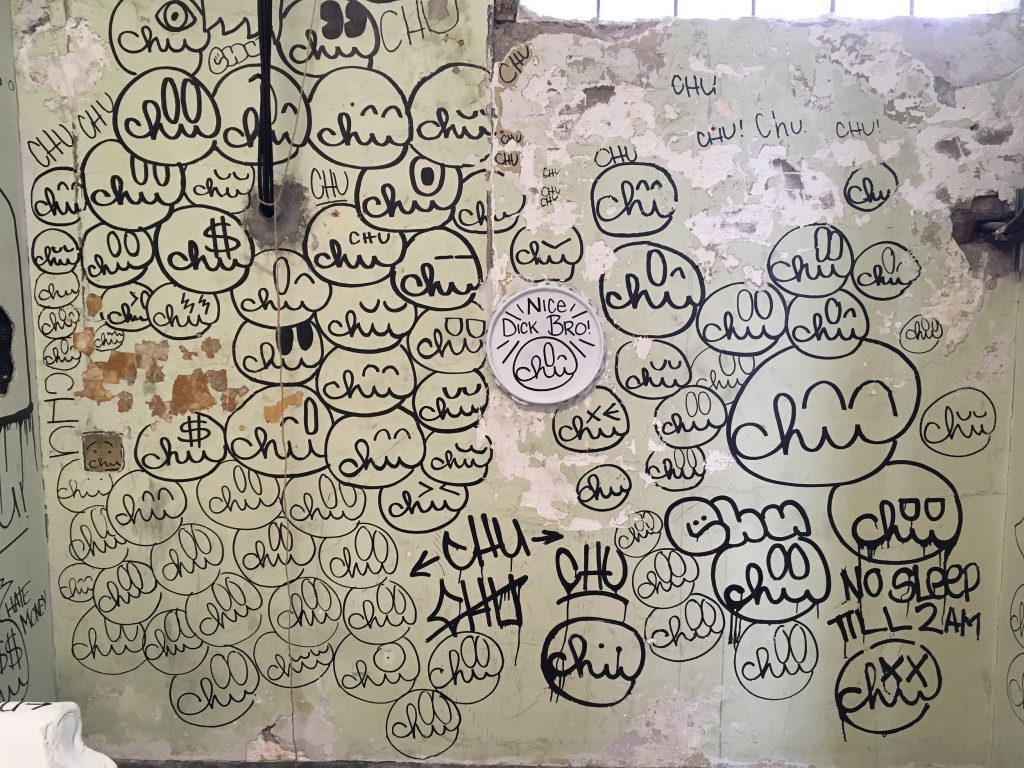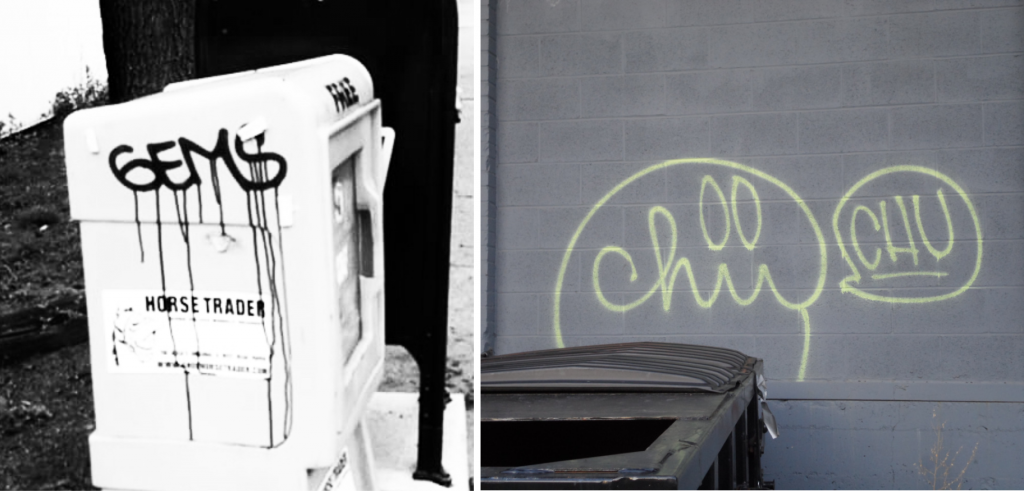Perry Naseck, Andey Ng, and Mary Tsai

Overview
Our project aims to discover and analyze the gestural aesthetic of graffiti and its translation into a robotic and technical system. Our goal is to augment and extend, but not replace, the craft of graffiti using a robotic system. With the capabilities of the robot, we can explore and find artistic spaces that may be beyond the reach of human interaction but still carry heavy influences from the original artist.
Due to the complexity of graffiti, we are sticking solely to representing the graffiti artists “tag”, which is always a single color and considered the artist’s personalized signature. The tag is a complex set of strokes that are affected by the angle of the spray can, the distance from the wall, the speed that the can is moved, and the amount of pressure in the can.

The objective of the project is to explore the translation of human artistic craft into the robotic system, while maintaining the aesthetic and personal styles of the artist. Our study will not be character based (studying one letter at a time), but more about the techniques that underlie the graphic style.
Timeline
- Our first step is to understand and capture unique gestural motions that embody the style of the graffiti artist (i.e. flares, drips). We will watch and record the artists spray an assortment of different tags and styles on canvas. Once these gestural motions are categorized, our team will analyze and formulate different variables to modify and test. These variables may consist of components such as speed, distance, and orientation.
- We will then use Motion Capture technology to capture the artist’s gestures performing these specific components. This will allow us to begin to programmatically analyze how to translate the human motions into the robot’s language.
- Utilizing Rhino and Grasshopper, we may program the robot to replicate the graffiti technique. While this is a useful origin point, our goal is not to simply reproduce the graffiti tag, but to enhance it in a way that can only be done through digital technology. We are not aiming even to perfectly replicate a tag or a style, as an imperfect representation is a new style and output in itself. With this in mind, we will begin experimenting with modifying different variables and looking at the pieces produced.
- The final output and which variables we experiment with will be determined from our findings in the previous steps.
- The final project will be a collaborative and co-produced piece that has both analog and robotically sprayed marks, emphasizing the communicative and learning process between human and machine.